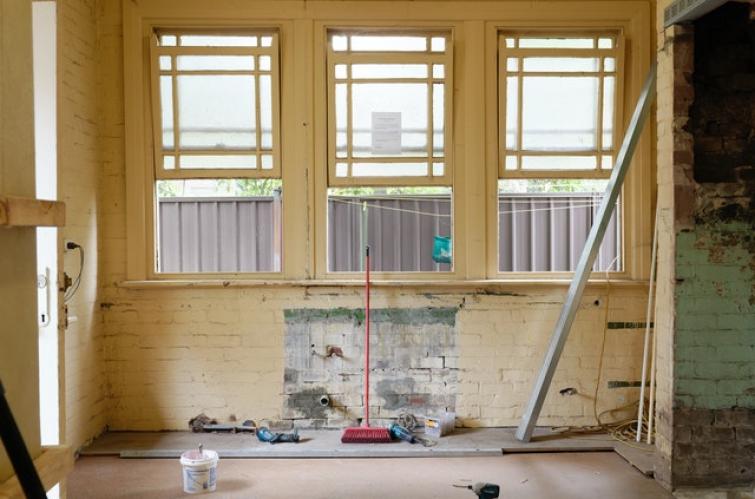
In interviews with Weatherization Assistance Program (WAP) implementers and agencies, a key programmatic challenge cited was walkaway rates. Walkaways happen when a home is unable to be weatherized due to a structural or health and safety issue, like a hole in the roof, flooding, hoarding and more. WAPs in the Midwest receive their funding largely from two sources, the U.S. Department of Energy (DOE) and the State Low-Income Home Energy Assistance Program (LIHEAP). Some states receive additional funding from local utilities, but that is not consistent throughout the region. In states like Wisconsin that receive most of their funding from a utility public benefit fund, there is higher flexibility in how the WAP dollars are spent, and these home hazards, which would typically result in a walkaway, can be addressed. However, the other funding sources, like DOE and LIHEAP, have strict restrictions on how their dollars can be used to fund home improvement measures, which prevents WAP implementers from using their funding to remediate those larger issues in the home. Since this gap is common across the region, MEEA has been researching ways to reduce these high rates. Recently, the research began to explore alternative ways to structure programs or braid funding as a step towards reducing walkaway rates.
While home upgrade costs and overall program budgets are often cited as limitations to addressing walkaways, there are numerous grants and funding sources available that are aimed at health, housing and energy and could be braided with WAP funding to address these issues. Alternatively, existing organizations across the three sectors that receive this funding could collaborate and consolidate assistance application forms to facilitate smooth referrals across programs.
In a report by the American Council for an Energy Efficient Economy (ACEEE), researchers explored the potential for braiding energy and health funding for in-home programs. The motivation for this collaboration between health and energy program implementers is to increase the impact in households served.
MEEA spoke with active health and energy programs to understand where current successes and barriers lie, and to find potential replicable models. The seemingly most successful example in the Midwest involved the Center for Medicaid Services (CMS) State Children’s Health Insurance Program Health Services Initiative (CHIP HSI) and the Department of Housing and Urban Development (HUD) Lead Hazard Control Grants with Healthy Homes Supplemental Funding. In Michigan, these funding sources have been used as one way to address the Flint Water Crisis by combatting lead hazards in the state. The State Medicaid office collaborates with the state’s Healthy Homes Section to complete lead abatements and other home modifications to combat lead poisoning. This collaboration is also made possible through the MI Bridges universal application portal for most of the home service/low-income programs in Michigan. This decreases the burden of paperwork for low-income families and allows for an easy referral process.
In Michigan, numerous organizations have collaborated to increase the impact in low-income households, especially those impacted by lead. While the CHIP HSI funding can be used by the Medicaid Office to evaluate homes and identify services in need, the Healthy Homes team is the agency that goes into homes and implements the services identified. This collaboration allows for Healthy Homes to save money that would be used on evaluations to be put towards home services instead.
Healthy Homes is primarily funded by the CHIP HSI and a HUD Lead Hazard Control Grant but also receives other state dollars. They run programs that vary from community development, quality assurance, in-home lead services, certification programs and recently even a childhood lead poisoning prevention unit. The HUD grant allows up to $5,000 per home to address health and safety hazards like mold, asbestos, etc. Since Healthy Homes has funding aimed at addressing health hazards, they are also building a relationship with the state Weatherization Assistance Program, so homes that receive these health and safety retrofits can access the WAP without a walkaway. Healthy Homes also collaborates with local utilities who offer furnace replacement programs or other appliance replacement services. By connecting the Healthy Homes clients to the utility programs, they can increase the impact in these homes.
While Healthy Homes has the potential to reduce walkaway rates for other programs and increase benefits for housing repair programs in Michigan, it doesn’t solve all walkaway issues. The largest cause of walkaways for HUD projects, affecting most of their health and safety work, is HUD’s requirement that property taxes be up to date on any homes serviced with their funding. This means that often, Healthy Homes must connect homeowners to people who can set them up on a payment plan before their home can receive any services.
While there are challenges with Healthy Homes and these collaborations are fairly recent, there is intentional prioritization of building a network to increase the impact in Michigan homes. Carin Speidel of the Michigan Healthy Homes Initiative said it best: “We are working towards the same goal. We are working for the families and providing them a safer environment to raise their children."
Recommendations for states looking to reduce program deferrals:
- Consolidate the application process for in-home services in your state. Consistent application requirements to prove eligibility can reduce confusion and time spent on paperwork by the homeowner.
- Build a network of home services agencies in your state and convene regularly to open the channels of communication across the health, housing and energy sectors.
- Create a consistent home assessment that can be used across multiple agencies providing health, housing and energy services to homeowners – this can reduce the number of assessments needed by each agency individually and allow more money to be allocated to home improvements.
- Ensure your participating contractor network is well-versed in all available assistance programs so when applicable, they can disseminate information to homeowners on other services for which they may qualify.